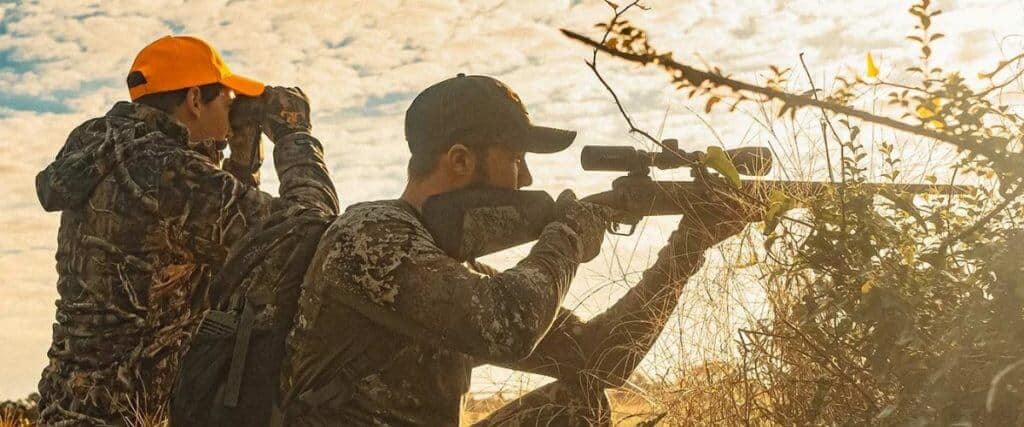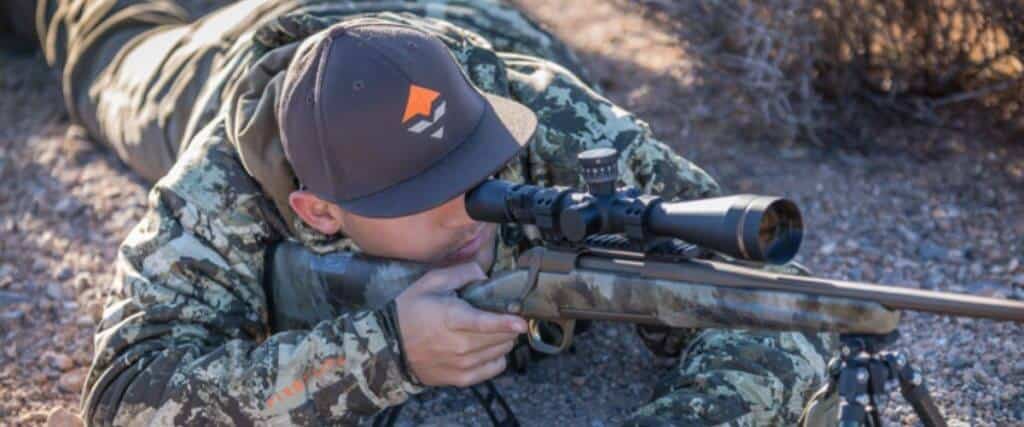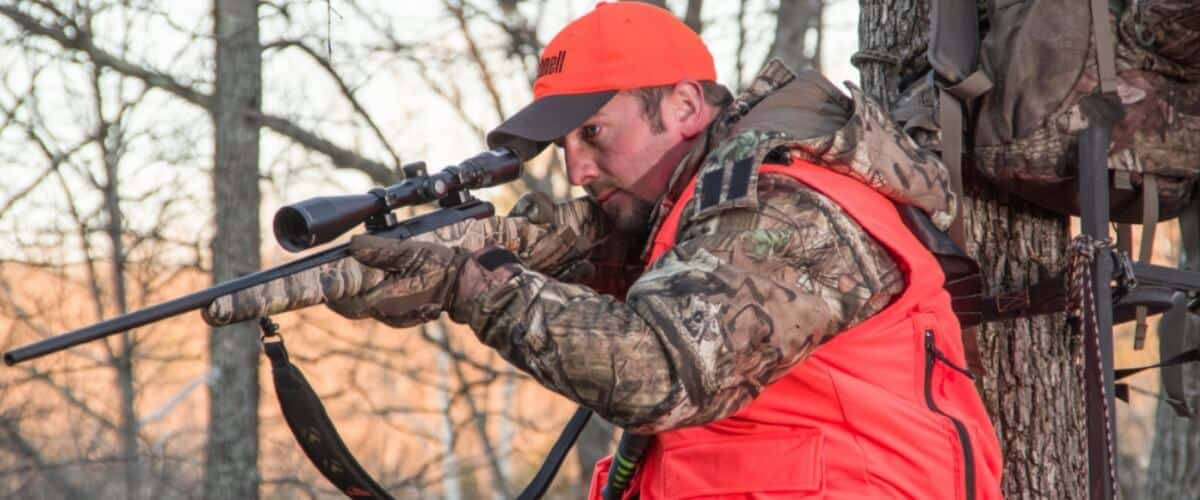No outdoor activity compares to the thrill of hunting. We live for those moments before and after we squeeze the trigger. Your heart is racing, and you can barely keep your excitement; you exhale and squeeze – a cloud of smoke, your quarry drops, and all the elation come flooding in as you walk hurriedly toward your kill to tag it. Hunting makes you feel alive as nothing can!
Practice Makes for Better Hunting

The journey is as important as the destination, they say, and preparing for hunting trips also makes for some of the best memories we have. Shooting deer out in the wild backcountry requires some hours of practice rifle shooting. Whether we absorb at the shooting range, or out in the field, everybody remembers the time they learned how to shoot a rifle properly.
Seasoned or beginner hunters will want to practice shooting before deer hunting season comes around. Practice keeps technique fresh and helps remove bad habits that hinder success on a hunting trip. With practice, shooting properly becomes muscle memory, and you will have an easier and more fruitful deer hunting season.
Fundamentals of Long-Range Rifle Shooting
If you are a beginner or you just want to review the fundamentals of long-range rifle shooting, here is a list of things you need to master to shoot with your rifle properly:
- Be Stable – No matter what position you will be in when hunting, you will need to be as stable as possible. Rest your rifle on bipod legs or a bag, or whatever you prefer. Lie prone, be seated in a tent or tree stand, as long as you are in a steady, comfortable position that you can keep for a long time, you are good to go.
- Sight Alignment & Sight Picture – Once you are in a stable, comfortable position, make sure you have set up your long-range rifle scopes for your rifle. Sight alignment in your scope is important to have your sight and reticle have just one true aim and not canted off to any direction. This way you can have your rifle firing exactly at your target as you have perceived with your rifle scope.
- Trigger Control – The right way to have trigger control is to squeeze the trigger instead of pulling it with one sudden jerk. Apply and add constant pressure on the trigger before, during, and after the rifle goes off. This follow-through with squeezing the trigger prevents you from jostling the rifle and ruining the aim you carefully placed with your scope.
- Go out and practice –Where to shoot a rifle and practice greatly affects your chances out in the field. Practice in a variety of indoor and outdoor conditions before a hunting trip and you’ll be more ready than ever.
Train Your Shooting Accuracy at Every Practical Distance
When deer hunting season is just around the corner, any decent hunter has to practice their shooting skills. Rehearse your shooting accuracy at every practical distance to be able to be effective at any range when faced with deer in the wild. You also better have the best rifle scope for deer hunting.
- 100 yards and under –Any deer hunter should be able to hit a deer’s kill zone from 100 yards and under all the time, every time. Most kills are made at this distance so make sure you are confident and effective within 100 yards.
At this distance, you could use any pie plate-sized target that you could buy or make yourself. Hitting these targets at a hundred yards is still visible from where you fire from.
- 200 to 300 yards – A more intermediate distance, but a truly competent hunter is a threat to deer at 200 to 300 yards. You will not be able to choose how far a deer is from you when out in the wild and being familiar with hitting a target 200-300 yards away will pay dividends in giving you confidence in shooting a deer’s kill zone when out on a hunting trip.
Try using 1-gallon milk jugs filled with water and paper targets attached to them. At 200 to 300 yards, it will be easy to see an exploding milk jug whenever you hit the target.
- 400 yards – This distance makes for a sketchy proposition but any target within your hunting rifle’s effective range still makes for a possible kill. At the 400-yard range, you will have to master factoring in wind, the fact that your bullet is plummeting towards the ground due to gravity, and low bullet velocity drift. Shooting at a practice target 400 yards out for a couple of hundred times, and it will be worth it in the wild.
- Keep a Cheat Sheet – Keep a cheat sheet for wind adjustment when out practicing for windy conditions. After referring to your cheat sheet for several practice sessions, you will eventually know how to adjust by heart and will not need one when out in the field – an important skill to have when a real deer is standing ahead of you in a windy field.
The High Shoulder Shot: An Ethical Way to Immediately Take a Deer Down Quickly and Humanely

Deer are noble, swift, and beautiful, and their grace is unmatched by any forest animal. To honor them, it is our responsibility as hunters to execute the correct, humane way to take their lives.
It is a must that every hunter with a rifle learn the proper shot placement to take a deer down quickly and humanely.
Shooting deer at the high shoulder or the Brachial Plexus instantly kills a deer and this makes for the minimal amount of pain and suffering.
The Brachial Plexus rests on a deer’s shoulder blade and houses a central hub of nerve bundles coming from five cervical spinal cord areas. This is comparable to a fuse box or a breaker box in a house. If you flip this switch, the deer’s nervous system immediately goes lights-out.
Be kind enough to deer you kill and save yourself the trouble of letting a deer escape by doing a high shoulder shot every time you go out on a hunting trip.
Take the high shoulder shot when deer stand broadside and the shoulder is exposed and easily targeted.
Neck Shots, Head Shots, and Targeting Other Vital Organs
Aiming and hitting a deer in the head, neck, heart, or lungs are also ways to shoot and kill a deer, but are not definite ways to instantly kill them and are therefore not ethical and humane. There is also the risk that you might miss these targets and hit the animal in a non-vital part instead.
Headshots are extremely difficult. A deer will eventually die after a lengthy blood trail after you hit the animal in the jaw when you were aiming for its head. The neck is also a tricky target for a kill shot unless your bullet severs its spine – a very difficult thing to do even for the most experienced hunters.
Aiming for the heart and lungs will kill the deer but not instantly. Following a blood trail of an animal as it dies from drowning in its blood isn’t exactly humane.
How to Practice Shooting in All Kinds of Hunting Environments
You will likely be familiar with the environment of your next hunting trip. Practice outdoors in similar conditions and have more success on the field.
Make sure you practice shooting uphill, downhill, in all possible positions. Practice shooting from a tree stand or from inside a tent. Practice whatever circumstances you will most likely be in on your hunting trip.
Match Your Ammo to Your Scope
If you use a .22 LR Hunting rifle that shoots .22 caliber rimfire bullets, do not make the mistake of using a centerfire scope on it. 22 LR has an effective range of 50 yards and will work best with rimfire scopes. Equipping the 22 LR with one of the best rimfire scopes out there will maximize the rifle’s effective range and will greatly improve the shooter’s accuracy.
Know the technicalities of your ammunition, rifle, and scope by heart and have the best results and get the maximum performance from your equipment. For example, the 6.5 Creedmoor cartridge started life as a popular long-range sport shooting round. With a 24-inch barrel rifle, the 6.5 Creedmoor will have an effective range of 250 yards of less than 1-inch bullet drop. But with a 6.5 Creedmoor scope, you significantly increase your distance and effective range by around 400 yards more.
Ascertain Your Comfortable Range and Stick to Your Strengths
How much you practice and how much field experience you have will give you a shooting distance that you will be most confident with. Know your strength and shoot within your limits for maximum success and efficiency.
Work on your weaknesses by practicing in distances or conditions that you have difficulty with. Work towards having a more complete hunter’s shooting skill set and never be thrown off by anything the wilds throw at you.
Humaneness Separates the Great Hunters from the Rest
A good hunter diligently practices his shots from all possible distances and conditions, knows his gear and other hunting skills by heart. But one can only be a great hunter if he cares about his quarry. Remember that the proper shot placement will honor your kill and your art as a hunter.
Mike Fellon is an experienced firearms enthusiast and optics expert. He delivers unbiased and detailed rifle scope reviews. Born and raised in Dallas, Texas. He inherited his hunting passions after his father John – he was fascinated by his stories, hearing how much attention, focus, dedication and patience he invested in shooting every animal. When he was old enough, his father first allowed him to shoot some cans and bottles with his shotgun, and then took him hunting – it was love at first sight. Mike has never stopped shooting ever since.

